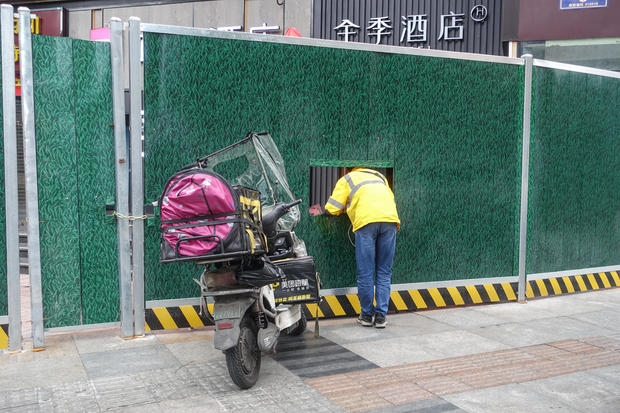China extends coronavirus lockdown of megacity Chengdu indefinitely, with no end in sight to strict “zero-COVID” policy
[ad_1]
Beijing — It’s all starting to feel very familiar: A few COVID-19 cases pop up, local government officials announce a lockdown scheduled to last a few days, then more cases emerge — not many, but more — and the lockdown is extended for another few days. And then, as the people of Shanghai learned earlier this year, the restrictions are made indefinite.
Many of those unlucky enough to have found themselves stuck in Shanghai, China‘s financial hub, in the spring were left confined to their homes for months. Summer was well underway before they were allowed to re-emerge.
Now the 21 million people of Chengdu, a sprawling industrial city in western China where many Apple products are made, have found themselves staring down a coronavirus lockdown with no clear end date.
Local authorities ordered residents to stay home last Thursday, with only one person per household permitted to venture out for necessities. Nonessential workers were urged to work from home and residents were advised not to leave the city at all. They were told the restrictions would last four days. But that was extended to a full week.
Yuan Kejia/VCG/Getty
Then on Wednesday night, the government announced another extension — this time indefinite. Most residents must stay in their homes — apart from a sojourn to one of the many official testing sites that dot Chinese cities for the mandatory daily PCR test.
Those living in neighborhoods deemed less risky by local health authorities are allowed to go out to buy groceries for two hours every other day. People with medical needs must apply for pre-approval to go out for medicines or appointments.
The astonishing thing to many outside of China may be the extremely low bar for triggering such draconian measures: The number of COVID-19 cases registered in Chengdu — which again is home to some 21 million people — has hovered around only 100 in recent days. That infection rate dwarfs figures in other parts of the world, including many where virtually all COVID restrictions have been lifted.
But 100 is not zero. And under China’s controversial “zero-COVID” policy, any COVID is too much.
With just weeks to go before the once-in-decade Communist Party Congress gathering in Beijing, which is all but certain to see President Xi Jinping secure a third term in office, few expect to see any divergence from the absolutist anti-coronavirus policy.
The Chinese people have now endured three years of on-and-off restrictions — including the brutal two-month lockdown in Shanghai earlier this year. As of this week, the international financial services firm Nomura estimated that lockdowns or partial lockdowns were in place in a total of 49 cities, affecting some 292 million people across a huge swath of the country.
The mandatory daily testing in those places is a huge burden for residents, but also for authorities, both financially and logistically. In Chengdu, with its huge population, it proved to be too much, temporarily crashing the testing system earlier this week.
Even on a national level, there’s a huge juxtaposition between China’s coronavirus figures and response, and those seen around the world. While most countries, including the U.S., have abandoned COVID lockdowns despite much higher infection rates.
The U.S., for instance, is averaging about 74,000 new cases per day. On Monday, China reported just over 1,600 new infections.
But Beijing argues that with a low vaccination rate among its elderly, less-effective vaccines, and ever-more transmissible variants, it has no choice but to double down.
There is some hope that, once the looming Party Congress is out of the way in October and Xi’s ongoing tenure is presumably secured, authorities could ease up on the strict measures.
But few expect it to come as a sudden lifting of restrictions. By one analysis, if China were to completely open back up right now, its lack of natural immunity combined with an inadequate health care system could lead to more than a million additional fatalities.
So, China is widely expected to keep the drastic control measures in place throughout this year and, likely, for the foreseeable future.
[ad_2]
Source link











